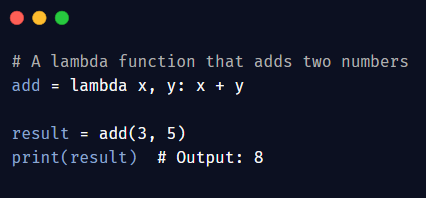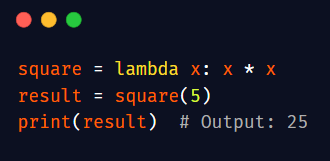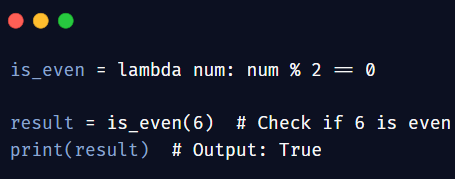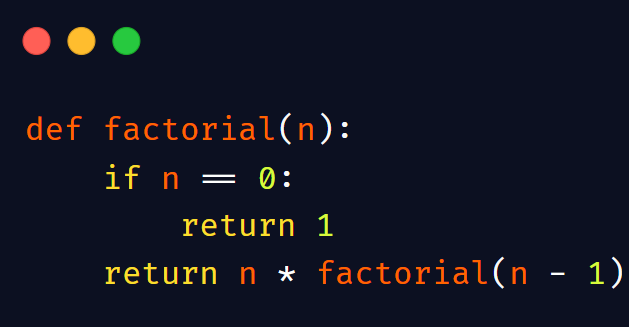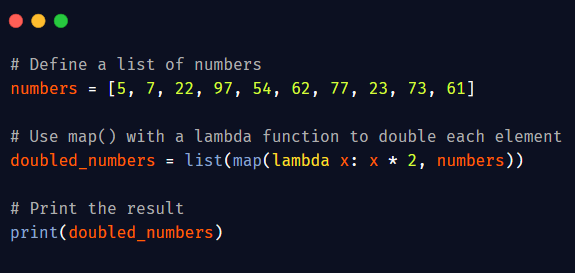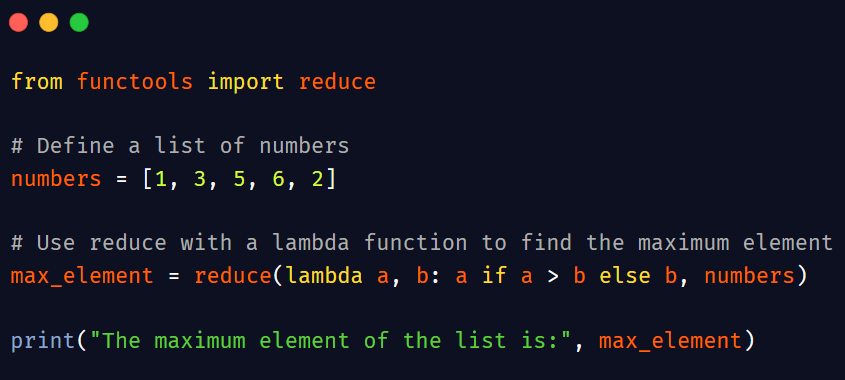For working professionals
For fresh graduates
- Study abroad
More
- Executive Doctor of Business Administration from SSBM
- Doctorate in Business Administration by Edgewood College
- Doctorate of Business Administration (DBA) from ESGCI, Paris
- Doctor of Business Administration From Golden Gate University
- Doctor of Business Administration from Rushford Business School, Switzerland
- Post Graduate Certificate in Data Science & AI (Executive)
- Gen AI Foundations Certificate Program from Microsoft
- Gen AI Mastery Certificate for Data Analysis
- Gen AI Mastery Certificate for Software Development
- Gen AI Mastery Certificate for Managerial Excellence
- Gen AI Mastery Certificate for Content Creation
- Post Graduate Certificate in Product Management from Duke CE
- Human Resource Analytics Course from IIM-K
- Directorship & Board Advisory Certification
- Gen AI Foundations Certificate Program from Microsoft
- CSM® Certification Training
- CSPO® Certification Training
- PMP® Certification Training
- SAFe® 6.0 Product Owner Product Manager (POPM) Certification
- Post Graduate Certificate in Product Management from Duke CE
- Professional Certificate Program in Cloud Computing and DevOps
- Python Programming Course
- Executive Post Graduate Programme in Software Dev. - Full Stack
- AWS Solutions Architect Training
- AWS Cloud Practitioner Essentials
- AWS Technical Essentials
- The U & AI GenAI Certificate Program from Microsoft
13. Print In Python
15. Python for Loop
19. Break in Python
23. Float in Python
25. List in Python
27. Tuples in Python
29. Set in Python
53. Python Modules
57. Python Packages
59. Class in Python
61. Object in Python
73. JSON Python
79. Python Threading
84. Map in Python
85. Filter in Python
86. Eval in Python
96. Sort in Python
101. Datetime Python
103. 2D Array in Python
104. Abs in Python
105. Advantages of Python
107. Append in Python
110. Assert in Python
113. Bool in Python
115. chr in Python
118. Count in python
119. Counter in Python
121. Datetime in Python
122. Extend in Python
123. F-string in Python
125. Format in Python
131. Index in Python
132. Interface in Python
134. Isalpha in Python
136. Iterator in Python
137. Join in Python
140. Literals in Python
141. Matplotlib
144. Modulus in Python
147. OpenCV Python
149. ord in Python
150. Palindrome in Python
151. Pass in Python
156. Python Arrays
158. Python Frameworks
160. Python IDE
164. Python PIP
165. Python Seaborn
166. Python Slicing
168. Queue in Python
169. Replace in Python
173. Stack in Python
174. scikit-learn
175. Selenium with Python
176. Self in Python
177. Sleep in Python
179. Split in Python
184. Strip in Python
185. Subprocess in Python
186. Substring in Python
195. What is Pygame
197. XOR in Python
198. Yield in Python
199. Zip in Python
How to Use Lambda Functions in Python?
Are you wondering how to use lambda functions in Python? Python 'lambda' functions offer a concise and efficient way to create anonymous functions for specific tasks in Python programming. Unlike conventional functions defined using the def keyword, 'lambda' functions use the 'lambda' keyword and are particularly useful when you need a simple, one-liner function without the need for a formal function name.
Lambda functions in Python are handy for various tasks. This guide will explore their usage and examples to help you leverage this powerful feature in your code.
Overview
In Python programming, 'lambda' functions are a versatile tool that simplifies code and enhances readability. If you're wondering how to use lambda functions in Python, you'll find that these concise, unnamed functions, created using 'lambda,' excel in handling short, simple tasks without explicit names. They shine in functional programming, serving as inputs to functions like filter(), 'map(lambda python)),' and reduce(), improving code organization and data transformation efficiency.
However, for complex logic, traditional deffunctions remain crucial. In this exploration, we unveil how to use lambda functions in Python through practical examples, showcasing their ability to optimize code and promote elegant programming practices.
What are 'Lambda' Functions in Python?
'Lambda' functions in Python are a way to create small, anonymous functions without using the def keyword. They are also known as anonymous functions because they don't have a name. 'lambda' functions are often used for simple operations and are defined using the 'lambda' keyword. When discussing "python lambda no arguments," we are referring to "lambda" functions that do not take any input arguments.'
Syntax:
The 'lambda' function's basic syntax is:
'lambda' 'arguments': 'expression'
- 'lambda': The 'lambda' keyword is used to define a 'lambda' function.
- 'arguments': These are the input parameters or 'arguments' passed to the 'lambda' function.
- 'expression': This is the single 'expression' or operation that the 'lambda' function performs.
Example: Simple 'lambda' Function
In this example, we define a 'lambda' function that takes two 'arguments' x and y and returns their sum.
Python 'Lambda' Function Syntax
Within the domain of Python programming exists a concept referred to as a 'lambda' function. This is akin to a concise, single-line function crafted using the 'lambda' keyword. 'Lambda' functions are typically employed when there is a requirement for a swift and uncomplicated function tailored to a specific task.
Here's how you write a 'lambda' function:
'lambda' 'arguments': expression
Here's what each part of the syntax means:
- 'lambda': The keyword that indicates the creation of a 'lambda' function.
- 'arguments': The input parameters or 'arguments' that the 'lambda' function takes. These are similar to the 'arguments' of a regular function but without parentheses.
- 'expression': The single expression that the 'lambda' function evaluates and returns. This expression typically operates on the input 'arguments.'
Examples of Python 'lambda' Functions:
1. Basic Example:
Let's create a 'lambda' function that calculates the square of a number.
2. Sorting a List of Tuples:
'lambda' functions are often used with functions like sorted() to provide custom sorting keys.
3. Filtering a List:
You can use 'lambda' functions with the filter() function to sort items in a list based on a specific condition.
4. Using 'lambda' with 'map()':
The 'map()' function applies a 'lambda' function to each item in an iterable.
5. Key Function in max():
You can employ a 'lambda' function as the special code inside functions such as max() to discover the highest value according to your unique rules.
These cases show how Python's 'lambda' functions are both versatile and straightforward for specific tasks.
Use of 'lambda' Function in Python - Condition Checking
'lambda' functions in Python are particularly useful for condition checking and filtering data. They allow you to define simple, anonymous functions on the fly. Here's an explanation with examples:
1. Basic 'lambda' Function:
A 'lambda' function is a small piece of code that usually works with one or more inputs and gives back an output depending on a certain condition. We can make a 'lambda' function to find out if a given number is even or not:
In this instance, the 'lambda' function named is_even is employed to determine whether a given number, num, is even. It accomplishes this by utilizing the modulo operator % to assess if there's a remainder when num is divided by 2. If no remainder is present, it returns True; otherwise, it returns False.
2. Filtering Data Using 'lambda' and Filter ():
'lambda' functions are often used with the filter() function to filter elements from a list based on a condition.
Example
In this instance, the 'aws lambda function python' works its magic inside the filter() function. It conjures up a fresh list (called even_numbers) that holds nothing but even numbers from the original numbers list.
3. Condition Checking in a List Comprehension:
'lambda' functions can also be used in list comprehensions to perform condition checking and transform elements in a list.
Example
In this instance, the 'lambda' function is employed inside the list comprehension to examine whether each number is even, and if it is, the number is squared.
4. Using 'map()' with 'lambda' for Transformation:
In Java, lambda functions can be used in conjunction with the 'map()' function to transform every item in a list according to a specified rule.
Example:
In this example, the 'lambda' function is used with 'map()' to double each number in the numbers list.
These examples demonstrate how 'lambda' functions in Python can be used for condition checking, filtering, and data transformation. They are concise and powerful tools for working with data and implementing conditional logic.
Difference Between 'lambda' functions and def defined function
'lambda' functions and functions defined using the def keyword in Python serve similar purposes but have some key differences.
Let's explore these differences with examples:
Aspect | 'lambda' Functions | def Defined Functions |
Definition | Anonymous functions | Named functions |
Number of 'arguments' | Any number, one expression | Any number, multiple expressions |
Readability | Concise, suitable for short ops | Readable for complex operations |
Assignability | It can be used directly | Need assignment or function name |
Use Cases | Short, one-off operations | Complex and reusable code |
Examples | Sorting, filtering, mapping | Custom algorithms, calculations |
Now, let's provide a short explanation with examples:
'lambda' Functions:
'Lambda' functions are like quick, simple tools for short tasks. They come in handy when you need a speedy function for a particular job. For example, think about arranging a list of pairs based on their second part:
def Defined Functions:
Functions defined with the def keyword are named, allowing for more extensive code blocks. They are typically used for creating custom, reusable functions for more complex tasks. Here's an example of a def defined function to calculate the factorial of a number:
This function can be called with different values of n to calculate the factorial.
Practical Uses of Python 'lambda' function
Python's 'lambda' functions, often called anonymous functions, serve as a handy tool in Python. They enable you to quickly generate small, nameless functions that can be utilized wherever you need function-like behavior. Here are practical uses of Python 'lambda' functions:
1. Python 'lambda' Function with List Comprehension:
'lambda' functions are handy for generating lists of functions on the fly. You can use them in list comprehensions to create a list of 'lambda' functions, each with its specific behavior. For example:
This creates a list of 'lambda' functions, where each function multiplies its argument by 10. You can then use these functions in iterations or other operations.
2. Python 'lambda' Function with if-else:
'lambda' functions can be used for concise conditional expressions. For instance, you can use them to find the maximum of two values:
The 'lambda' function here is like a decision-maker. It looks at two numbers, a and b, and picks the bigger one. If a is bigger than b, it chooses a. If not, it goes with b. This lambda function in AWS makes it easy to show such choices in a short and simple way.
3. Python 'lambda' with Multiple Statements:
Although 'lambda' functions are usually restricted to just one action, you can still tackle intricate jobs by merging several 'lambda' functions together. Take, for instance, the task of identifying the second biggest item in a list of lists:
Here, two 'lambda' functions are used together to sort each sublist and then find the second largest element in each sublist.
Using 'lambda'() Function with filter()
The provided source explains Python 'lambda' functions and their usage, including examples with filter(), 'map(),' and reduce().
Below, I'll provide a summary of using 'lambda' functions with filter()
1. Filtering Odd Numbers:
Suppose You have a list of numbers and want only the odd ones. So, You can do this with 'filter()' and a 'lambda' function.
Output:
This code uses the 'lambda' function to check if each number is odd (not divisible by 2) and filters them out using filter().
2. Filtering Adults by Age:
If you have a list of ages and want to find adults (aged over 18), you can use filter() with a 'lambda' function:
Output:
In this example, the 'lambda' function checks if each age is greater than 18, and filter() retains only those ages that meet this condition.
Using 'lambda'() with filter() efficiently extracts specific elements from a list based on a given condition.
Using 'lambda'() Function with 'map()'
Using 'lambda' functions alongside the 'map()' function provides a simple method to perform a specific action on every item in a list. Here, we present two instances:
Example 1: Multiply all elements of a list by 2 using lambda and map() function
Output:
Here, we list numbers and double them using the map() function with a 'lambda' function.
Example 2: Uppercase all list elements with 'lambda' and map().
Output:
Here, we list words and use a 'lambda' function with map() to make them all uppercase. 'lambda' functions are perfect for quick one-line tasks, avoiding the need for a separate named function.
Using 'lambda'() Function with reduce()
Python's reduce() function in the functools module lets you perform sequential actions on a list using a specific function and a 'lambda' function. Common uses include adding up list items and finding the largest item.
1. Sum All Elements in a List using 'lambda' and Reduce():
To find the sum of all elements in a list using 'lambda' and reduce(), you can follow these steps:
Example:
Output: 193
2. Finding the Maximum Element in a List using 'lambda' and Reduce():
To find the maximum element in a list using 'lambda' and reduce(), you can follow these steps:
Output: The maximum element of the list is: 6
These examples demonstrate using the 'lambda'() function with reduce() to easily calculate sums or find the maximum element in a list. The reduce() function combines the results of applying the 'lambda' function to each list element for these tasks.
Conclusion
In conclusion, Python 'lambda' functions provide a concise and efficient means to create anonymous functions for specific tasks. They excel in simplifying short operations, enhancing code readability, and finding applications in filtering, mapping, and sorting data. However, they are unsuitable for complex logic, where traditional defunctions are more appropriate.
FAQs
1. What are Python 'lambda' functions, and how are they different from regular functions defined using def?
Lambda functions in Python are like quick, nameless helpers you make with the 'lambda' keyword. They're perfect for doing small and simple jobs. Unlike regular functions made with def, lambdas don't have a proper name, which makes them great for tiny, specialized tasks.
2. What is the basic syntax of a 'lambda' function in Python?
A 'lambda' function is created using the syntax: lambda 'arguments': expression. 'Lambda' defines the function, 'arguments' are the inputs, and 'expression' defines its action.
3. Why are 'lambda' functions beneficial in Python when using list comprehensions?
'lambda' functions are useful in list comprehensions because they let you make quick, temporary functions as needed. For instance, you can craft a list of 'lambda' functions that multiply numbers by various factors all in one line of code.
4. How do 'lambda' functions facilitate conditional expressions in Python?
'lambda' functions provide a concise way to express conditional logic. You can employ a 'lambda' function to determine the larger of two numbers by using a straightforward Python lambda if else.
-9cd0a42cab014b9e8d6d4c4ba3f27ab1.webp&w=3840&q=75)
Take our Free Quiz on Python
Answer quick questions and assess your Python knowledge


Author|900 articles published


upGrad Learner Support
Talk to our experts. We are available 7 days a week, 9 AM to 12 AM (midnight)
Indian Nationals
Foreign Nationals
Disclaimer
1.The above statistics depend on various factors and individual results may vary. Past performance is no guarantee of future results.
2.The student assumes full responsibility for all expenses associated with visas, travel, & related costs. upGrad does not provide any a.

